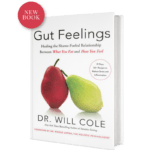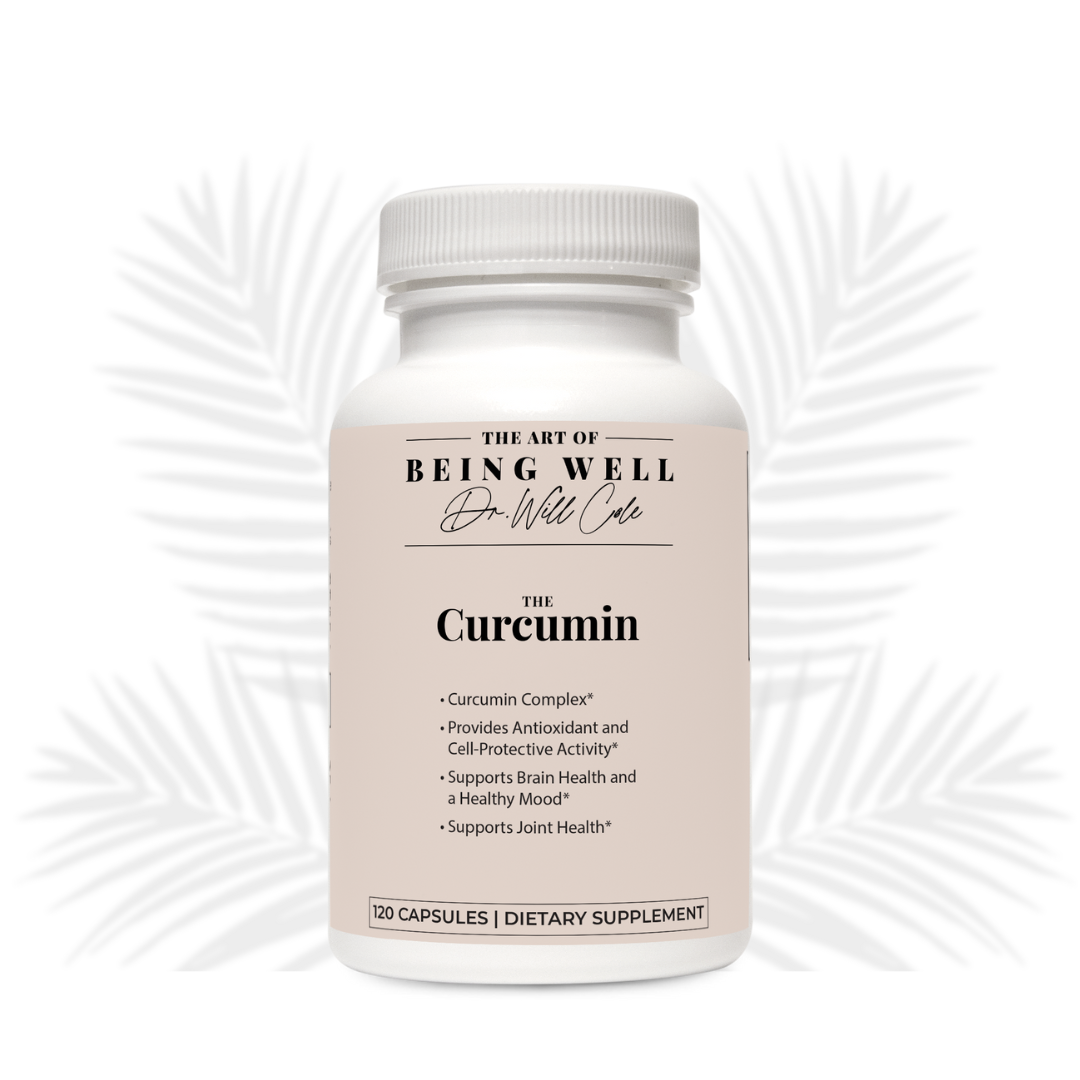How Chronic Inflammation Wrecks Your Health + What To Do About It

In my telehealth functional medicine clinic, I see one thing in common with almost all of my patients: inflammation.
This health problem is triggered by many factors that manifest in a wide range of symptoms unique to each individual. But if you don’t know how inflammation plays a role in your health, it’s easy to dismiss or ignore this vital health determinant altogether.
Systemic chronic inflammation (SCI) is a long-term condition associated with a large number of significant negative health effects. If you’re fighting autoimmune symptoms or chronic health problems with no specific cause, inflammation is often the masked villain causing that trouble.
Let’s review what you need to understand about inflammation and what to do about it.
Think you have chronic inflammation, but aren’t sure? Take my quiz to find out.
ARTICLE CONTINUES BELOW
Make Your Life a Cleanse
SUBSCRIBER-ONLY GUIDES FOR GUT HEALTH, VIBRANT ENERGY, HEALTHY FOOD & CLEAN ALCOHOL
Get FREE access to these + giveaways, recipes, & discount codes in personal emails from Dr. Will Cole.
What Is Inflammation?
Inflammation is a defense mechanism that kicks in when your immune system believes it is in danger of harm or has been injured. (1) In a healthy body, the purpose of inflammation is to trigger the healing process by increasing blood flow to the affected area, producing more white blood cells, and releasing inflammatory cells to fight the invader.
LISTEN: Autoimmune-Inflammation: Top Causes & Exactly How To Heal - Dr. Will Cole
Acute Vs. Chronic Inflammation
Acute inflammation is the normal process by which the immune system responds to injury, the presence of harmful bacteria, or exposure to dangerous compounds (like breathing in fumes). It tells your body to heal the affected tissue or fight infection and lasts somewhere between a few days to 6 weeks.
Chronic inflammation is a dysfunction of the body’s inflammatory response that wreaks havoc on your health. This happens when the body produces and sends inflammatory cells without the presence of harmful chemicals, organisms, or damage. Chronic inflammation can last months, years, or even the rest of a lifetime if it’s not addressed.
Think of it this way: When you fall and land on your knee, acute inflammation tells your skin how to repair the scrapes and your joints and related tissues how to fix any internal damage. A few weeks later, you’re probably healed and may have forgotten the injury.
On the other hand, chronic inflammation occurs in autoimmune disorders and due to exposure to harmful foods and other substances over a long period of time. Your body doesn’t actually need those inflammatory cells, but your body keeps sending them anyway.
Eventually, this leads to chronic inflammatory diseases such as cardiovascular disease, diabetes, and more.
Symptoms
Common symptoms of chronic inflammation include:
- Nonspecific body pain
- Trouble sleeping (insomnia)
- Brain fog
- Chronic fatigue
- Mental health concerns like depression, anxiety, and other mood disorders
- Gastrointestinal problems (frequent constipation, diarrhea, acid reflux, etc.)
- Weight gain or weight loss
- Susceptibility to infections (like if you get colds all the time)
What Causes Chronic Inflammation?
The primary causes and risk factors of chronic inflammation are: (1)
- Autoimmune disease: Autoimmune conditions are frequently triggered by chronic inflammation. In these conditions, your immune system mistakenly attacks healthy tissue because it believes that tissue is actually harmful.
- Aging: For many people, aging leads to chronic, low-grade inflammation. This is generally caused by an increased amount of oxidative stress over time but can be made worse by other lifestyle factors. (Aging does not mean that you must develop inflammation!)
- Oxidative stress: High amounts of oxidative stress can come from anything from a poor diet to exposure to some household chemicals. Some oxidative stress is unavoidable, but excessive oxidative stress can damage your genes and how your cells function over time.
- Low sex hormone levels: If your sex hormones dip below optimal levels for long periods of time, chronic inflammation will result.
- An inflammatory diet: A diet high in inflammatory compounds (processed sugars, food additives, alcohol, and more) is one of the most common causes of chronic inflammation. (2)
- Lack of physical activity: People who are sedentary for long periods of time are at a much higher risk of chronic inflammation. (2)
- Obesity: Obesity is both a symptom and a risk factor for chronic inflammation. (3) The more significant the weight gain, the more notable the changes in your inflammatory markers are likely to be.
- Smoking and vaping: Smoking and vaping contribute to chronic inflammation (and a large list of dangerous and sometimes fatal conditions). (4, 2)
- Social and cultural factors: Many developments of the modern age are associated with inflammation. (3) The most prevalent of these include poor social connections, a sleep schedule unrelated to the rising and setting of the sun, exposure to artificial light (especially blue light), and high-stress work environments with little to no autonomy.
- NSAID overuse: Using non-steroidal anti-inflammatory drugs too often can actually create chronic inflammation. (5) This can happen by taking too much of an NSAID like ibuprofen or by taking the recommended dose too frequently.
- Inflammation-modulation disorders: Any disorder related to a defect in the cells your body uses to modulate inflammation can lead to chronic inflammation (such as Familial Mediterranean Fever). These disorders are fairly rare.
- Long-term exposure to infectious organisms or irritants: If you’re exposed to a bacteria, fungus, parasite, or virus, and that organism isn’t killed (whether by your immune system or treatment like antibiotics), chronic inflammation can occur. The same is true with irritants like dangerous chemicals you inhale.
- Repeated acute inflammation: If you suffer a series of infectious illnesses, for instance, that acute inflammation over and over may lead to chronic inflammation.
Because no part of your body exists in a vacuum, inflammation isn’t just a one-way process. Sometimes, chronic inflammation is the cause of issues like obesity or autoimmunity. Other times, chronic inflammation triggers those things. Regardless, chronic inflammation is dangerous and has far-reaching impacts that it’s best to avoid!
Long-Term Effects Of Chronic Inflammation
1. Brain Problems
Chronic inflammation causes so many problems with your brain that a whole area of medical research known as “the cytokine model of cognitive function” is dedicated to researching exactly how inflammation is correlated with brain problems. (6)
When inflammation is high, your microRNA-155 molecule is elevated and creates gaps in the blood-brain barrier that allow bacteria and other toxins to slip through. (7) Your brain’s immune system has to work in overdrive to fight off these invaders, so it triggers even more inflammation in your brain in a last-ditch effort to try to protect it.
This inflammatory oxidative stress in the hypothalamus of the brain is the underlying cause of brain fog, anxiety, depression, and other problems like dementia and age-related cognitive decline. Elevated cytokine levels negatively impact brain plasticity, learning, and memory. (8)
Related: How To Reduce Brain Inflammation Naturally || How to Improve Cognitive Function: 10 Steps to Strengthen the Mind
2. Gut Dysfunction
Inflammation affects what science often refers to as the “second brain” — your gut.
When your gut lining is damaged by years of unhealthy eating, food intolerances, stress, and toxins, it can allow unwanted compounds to pass out of the digestive tract and into the rest of the body where they don’t belong.
These compounds, including undigested food particles and bacterial endotoxins called lipopolysaccharides (LPS), cross the gut barrier due to inflamed, larger-than-normal “T junctions.” This process is called poor intestinal permeability and is the precursor to leaky gut syndrome. (9)
Sensing an “invader,” the body can react with systemic inflammation that can become chronic and lead to digestive issues and further perpetuate other problems like autoimmune disease.
Read Next: Autoimmune Gastritis: Symptoms & Treatments
3. Autoimmune Disease
Autoimmune diseases known to be caused by inflammation include:
- Rheumatoid arthritis
- Inflammatory bowel disease (including Crohn’s disease and ulcerative colitis)
- Hashimoto’s thyroiditis (autoimmune hypothyroidism)
- Gout
- Type 1 diabetes
- Celiac disease
- Atopic dermatitis, including eczema and psoriasis (10)
Since your immune system mainly resides in your gut, it is no surprise that a leaky gut and out-of-control inflammation are preconditions for autoimmunity. (11) Autoimmune diseases are one of the issues that can both cause and be caused by chronic inflammation.
While we don’t know for certain what initially triggers autoimmune conditions, the reigning theory is that a genetic weakness is triggered by an immune system response. The response may be to toxins through a compromised gut lining or chronic viral, bacterial, yeast, or parasite infections.
This inflammatory-immune response can both cause and increase intestinal permeability or leaky gut syndrome, further perpetuating the inflammatory-immune cycle.
4. Hormone Imbalance
Hormones are the messengers of your body, responsible for sending out instructions to every system of your body to fulfill its proper function. Chronic inflammation can cause overproduction or shortages of many vital hormones, causing not only hormonal imbalances but also other chronic conditions.
Inflammation leads to hormonal issues such as: (12)
- Insulin resistance/poor insulin sensitivity
- Excess male hormone production in females, which can impact menstruation and fertility
- Vitamin D deficiency
- Chronic overproduction of cortisol, the stress hormone
- Overactivity of the nervous system
- Electrolyte imbalance
Unfortunately, the issues triggered by these hormonal issues are often a vicious circle that contributes to ongoing inflammation and chronic disease.
For example, in cases of leptin resistance, the hypothalamic cells in your brain stop recognizing leptin’s signals when inflammation blocks your brain’s leptin receptor site. The brain doesn’t perceive that enough food has come in and reads that as starvation. Everything you eat goes straight into fat storage, without being used for energy, making the problem even worse.
5. Metabolic Issues
Metabolic function is a major driving force behind your overall health and risk of disease in the future. It’s one reason metabolic syndrome (a cluster of symptoms) is considered one of the strongest risk factors for chronic diseases like heart disease and diabetes.
Metabolic issues caused by chronic inflammation include: (13)
- High triglycerides
- High blood pressure (hypertension)
- Poor insulin sensitivity (insulin resistance)
- High blood sugar
- Atherosclerosis (buildup of fatty substances in blood vessels)
- Obesity and uncontrolled weight gain
Down the line, these metabolic symptoms lead to very high risks for chronic diseases including cardiovascular disease, type 2 diabetes, NAFLD, and more.
6. Chronic Disease
Chronic inflammation is closely related to the risk for a large number of chronic inflammatory diseases, including: (1, 3)
- Type 2 diabetes
- Heart disease (including coronary heart disease, stroke, and heart failure)
- Arthritis (including both rheumatoid arthritis and osteoarthritis)
- Asthma and allergies
- COPD (chronic obstructive pulmonary disease)
- NAFLD (non-alcoholic fatty liver disease)
- Chronic kidney disease
- Cancer
- Depression
- Neurodegenerative disorders, such as Alzheimer’s disease and dementia
- Sarcopenia (loss of skeletal muscle density)
It takes years, and often several decades, to see these chronic effects of chronic inflammation. That’s why it’s important to take action today!
Read Next: Our Current Healthy Obsessions: Tools To Support Healthy Inflammation
How To Lower Inflammation
To lower inflammation, address your health from a holistic perspective. Here are some of the ways you can reverse and protect your body from chronic inflammation:
- Food is foundational for long-term sustainable healing — no trendy quick fix can make up for what you eat every day. Prioritize nutrient-dense foods rich in healthy fats, antioxidants like polyphenols, and fiber-rich foods such as sea moss. Minimize the amount of boxed, high-sugar, and processed foods you eat. It’s also a good idea to learn what your particular food sensitivities are, as something that may trigger inflammation for you may not be a traditionally “unhealthy” food. I've also found that juicing can be an effective way to supplement your intake of fruits and veggies that help fight inflammation.
- Physical activity has anti-inflammatory effects that make it a must-have lifestyle change to lower inflammation. (14) Low-impact activities, like walking your dog or doing beginner yoga, can be a huge bonus to your health. In fact, super high-intensity exercise can exacerbate inflammation and increase white blood cells, which makes moderate- and low-intensity exercise even more attractive.
- Maintaining healthy social connections can help keep your body and mind strong and protect you from the inflammatory processes that lead to so many health conditions. (15) Avoid isolating yourself from others, and consider mental health treatment like counseling if you struggle to form meaningful relationships.
- Anti-inflammatory dietary supplements and herbs can play a huge role, especially for certain conditions. The most effective, in my experience, include curcumin (the active ingredient in turmeric - you can find mine here), omega-3 fatty acids (fish oil - mine is available here), green tea extract, resveratrol*, spirulina, and vitamin D. (16, 17, 18, 19, 20, 21)
- Reducing your exposure to industrial chemicals is a vital component of reducing inflammation, though it may be difficult depending on your field of work. If you are in a job that requires you to have some chemical exposure, consider talking to your employer about reducing or eliminating this component of your work.
- Emerging anti-inflammatory treatments and therapies can also help. Some of the ones I’m watching most closely include helminthic therapy, fecal microbiota transplants, cryotherapy, and floatation tanks. While these are relatively new, they all have promising research to suggest they help fight chronic inflammation.
*While wine is famous for its resveratrol content, recent research suggests it doesn’t have enough resveratrol to create positive health benefits. When lowering inflammation, don’t look to wine for anti-inflammatory properties.
As one of the first functional medicine telehealth clinics in the world, we provide webcam health consultations for people around the globe.
Read Next: How Red Light Therapy Works & How To Use It || The Best Essential Oils for Allergies + How to Use Them || 14 Natural Remedies to Get Rid of Cold Sores Fast + Keep Them Gone
FAQ
There are a few common tests used to test for chronic inflammation: (1)
- Blood tests including C-reactive protein (hs-CRP or CRP) and fibrinogen
- Pro-inflammatory cytokine assays to test for TNF-alpha, IL-1beta, IL-6, and IL-8 (this is more expensive and more commonly used for research than in clinical practice)
Functional providers may also run other labs, not just a CRP, to determine what else could be causing your health concerns.
Healthcare providers may recommend NSAIDs like ibuprofen and naproxen for acute inflammation and pain relief (like if you sprained your ankle). However, this can actually make the problem worse and increase chronic inflammation when overused— they should be taken in tight moderation. (5)
Research does show that low-dose aspirin can be beneficial in preventing certain heart conditions. However, aspirin shouldn’t be a first-line defense against inflammation or heart disease. (22)
Steroids are also a common prescription used to fight inflammation, but most often used for acute inflammation, not chronic. Corticosteroids are used for asthma and some other chronic inflammatory conditions, but they’re just a mask of the underlying issue. (23)
I do not recommend long-term steroid use for chronic inflammation but rather treating the root cause with diet and lifestyle changes.
Some of the most inflammatory foods to avoid are:
- Processed foods (most boxed snack foods, lunch meats, etc.)
- Fried foods, especially fried in inflammatory oils and breaded with carbohydrate-heavy breading
- Foods and drinks high in processed sugar or high-fructose corn syrup (desserts, soda, etc.)
- Carb-heavy foods made with white flour
- Alcohol
Read Next: Best Juicing Recipes To Reduce Inflammation
Chronic inflammation can be reversed entirely in many cases! It’s not a disease, which means we don’t call it ‘cured,’ but by following the steps to lower inflammation, it can absolutely be reversed partially or completely.
There are several conditions that research shows the active ingredient in turmeric, curcumin, may treat or help to prevent, either as an additional therapy or a standalone treatment: (24, 16)
- Metabolic syndrome
- Inflammatory bowel disease (IBD)
- Psoriasis
- Atherosclerosis
- Arthritis
- Anxiety
- High cholesterol and triglycerides
- Dementia and cognitive impairment (25)
- COVID-19
- Candida (26)
- Multiple sclerosis (MS) (27)
- Exercise-induced inflammation and soreness
- Pahwa, R., Goyal, A., Bansal, P., & Jialal, I. (2018). Chronic inflammation.
- Pitsavos, C., Panagiotakos, D. B., Tzima, N., Lentzas, Y., Chrysohoou, C., Das, U. N., & Stefanadis, C. (2007). Diet, exercise, and C-reactive protein levels in people with abdominal obesity: the ATTICA epidemiological study. Angiology, 58(2), 225-233.
- Furman, D., Campisi, J., Verdin, E., Carrera-Bastos, P., Targ, S., Franceschi, C., ... & Slavich, G. M. (2019). Chronic inflammation in the etiology of disease across the life span. Nature medicine, 25(12), 1822-1832.
- Farrell, K. R., Karey, E., Xu, S., Gibbon, G., Gordon, T., & Weitzman, M. (2021). E-cigarette use, systemic inflammation, and depression. International journal of environmental research and public health, 18(19), 10402.
- Marcum, Z. A., & Hanlon, J. T. (2010). Recognizing the risks of chronic nonsteroidal anti-inflammatory drug use in older adults. The annals of long-term care: the official journal of the American Medical Directors Association, 18(9), 24.
- McAfoose, J., & Baune, B. T. (2009). Evidence for a cytokine model of cognitive function. Neuroscience & Biobehavioral Reviews, 33(3), 355-366.
- Lopez-Ramirez, M. A., Wu, D., Pryce, G., Simpson, J. E., Reijerkerk, A., King-Robson, J., ... & Romero, I. A. (2014). MicroRNA-155 negatively affects blood-brain barrier function during neuroinflammation. FASEB journal, 28(6), 2551-2565.
- Bourgognon, J. M., & Cavanagh, J. (2020). The role of cytokines in modulating learning and memory and brain plasticity. Brain and neuroscience advances, 4, 2398212820979802.
- Aleman, R. S., Moncada, M., & Aryana, K. J. (2023). Leaky gut and the ingredients that help treat it: a review. Molecules, 28(2), 619.
- Ivert, L. U., Wahlgren, C. F., Lindelöf, B., Dal, H., Bradley, M., & Johansson, E. K. (2021). Association between atopic dermatitis and autoimmune diseases: a population‐based case–control study. British Journal of Dermatology, 185(2), 335-342.
- Duan, L., Rao, X., & Sigdel, K. R. (2019). Regulation of inflammation in autoimmune disease. Journal of immunology research, 2019.
- Straub, R. H. (2014). Interaction of the endocrine system with inflammation: a function of energy and volume regulation. Arthritis research & therapy, 16, 1-15.
- Lee, Y. S., & Olefsky, J. (2021). Chronic tissue inflammation and metabolic disease. Genes & development, 35(5-6), 307-328.
- Cerqueira, É., Marinho, D. A., Neiva, H. P., & Lourenço, O. (2020). Inflammatory effects of high and moderate intensity exercise—a systematic review. Frontiers in physiology, 10, 1550.
- Leschak, C. J., & Eisenberger, N. I. (2019). Two distinct immune pathways linking social relationships with health: inflammatory and antiviral processes. Psychosomatic medicine, 81(8), 711.
- Hewlings, S. J., & Kalman, D. S. (2017). Curcumin: A review of its effects on human health. Foods, 6(10), 92.
- Calder, P. C. (2010). Omega-3 fatty acids and inflammatory processes. Nutrients, 2(3), 355-374.
- Bagheri, R., Rashidlamir, A., Ashtary‐Larky, D., Wong, A., Alipour, M., Motevalli, M. S., ... & Zouhal, H. (2020). Does green tea extract enhance the anti‐inflammatory effects of exercise on fat loss?. British journal of clinical pharmacology, 86(4), 753-762.
- Springer, M., & Moco, S. (2019). Resveratrol and its human metabolites—effects on metabolic health and obesity. Nutrients, 11(1), 143.
- Selmi, C., Leung, P. S., Fischer, L., German, B., Yang, C. Y., Kenny, T. P., ... & Gershwin, M. E. (2011). The effects of Spirulina on anemia and immune function in senior citizens. Cellular & molecular immunology, 8(3), 248-254.
- Filgueiras, M. S., Rocha, N. P., Novaes, J. F., & Bressan, J. (2020). Vitamin D status, oxidative stress, and inflammation in children and adolescents: a systematic review. Critical Reviews in Food Science and Nutrition, 60(4), 660-669.
- Berger, J. S. (2022). Aspirin for primary prevention—time to rethink our approach. JAMA network open, 5(4), e2210144-e2210144.
- Barnes, P. J. (2006). How corticosteroids control inflammation: quintiles prize lecture 2005. British journal of pharmacology, 148(3), 245-254.
- Peng, Y., Ao, M., Dong, B., Jiang, Y., Yu, L., Chen, Z., ... & Xu, R. (2021). Anti-inflammatory effects of curcumin in the inflammatory diseases: Status, limitations and countermeasures. Drug design, development and therapy, 4503-4525.
- Agrawal, R., Mishra, B., Tyagi, E., Nath, C., & Shukla, R. (2010). Effect of curcumin on brain insulin receptors and memory functions in STZ (ICV) induced dementia model of rat. Pharmacological Research, 61(3), 247-252.
- Sharma, M., Manoharlal, R., Puri, N., & Prasad, R. (2010). Antifungal curcumin induces reactive oxygen species and triggers an early apoptosis but prevents hyphae development by targeting the global repressor TUP1 in Candida albicans. Bioscience reports, 30(6), 391-404.
- Bright, J. J. (2007). Curcumin and autoimmune disease. The Molecular Targets and Therapeutic Uses of Curcumin in Health and Disease, 425-451.
The information on this website has not been evaluated by the Food & Drug Administration or any other medical body. We do not aim to diagnose, treat, cure or prevent any illness or disease. Information is shared for educational purposes only. You must consult your doctor before acting on any content on this website, especially if you are pregnant, nursing, taking medication, or have a medical condition.
Our content may include products that have been independently chosen and recommended by Dr. Will Cole and our editors. If you purchase something mentioned in this article, we may earn a small commission.

BY DR. WILL COLE
Dr. Will Cole, DNM, IFMCP, DC is a leading functional medicine expert who consults people around the globe, starting one of the first functional medicine telehealth centers in the world. Named one of the top 50 functional and integrative doctors in the nation, Dr. Will Cole provides a functional medicine approach for thyroid issues, autoimmune conditions, hormonal imbalances, digestive disorders, and brain problems. He is also the host of the popular The Art of Being Well podcast and the New York Times bestselling author of Intuitive Fasting, Ketotarian, Gut Feelings, and The Inflammation Spectrum.

Gut Feelings
Healing The Shame-Fueled Relationship
Between What You Eat And How You Feel

